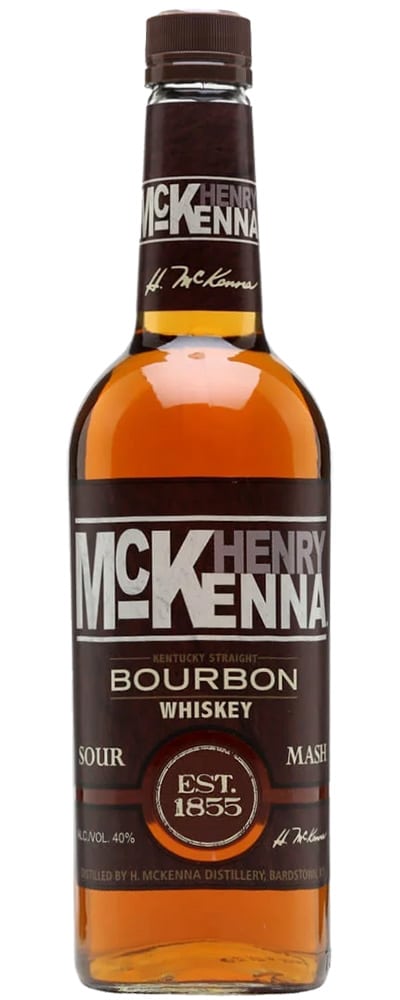I admit, we don’t try enough American whiskey. It’s just that we don’t get a big part of the releases here in Europe, and independent bottlers don’t seem to have much interest to dive into this category (they prefer cognac, armagnac, Irish whiskey…). Let’s take a small step and prepare this line-up of five whiskeys (mostly bourbons) with varying price tags.
Henry McKenna is made by Heaven Hill. This Irishman came to America in 1837 and settled in Kentucky. The whiskey shares the same mashbill as many other Heaven Hill brands (78% corn with 12% malt and 10% rye).
Henry McKenna – Kentucky Straight Bourbon Whiskey (40%, OB +/- 2022)
Nose: fairly light, mostly on citrusy aromas and green apple at first. Lemon peels mixed with minty pinewood. Freshly opened Ikea pack. Then vanilla and some dusty notes, as well as some sour berry. Later more classic caramel aromas come out.
Mouth: still lighter and a bit drier than I expected. Lemons and pecan nuts, followed by caramel and maize sweetness. Some white pepper, caraway seeds and nutmeg, again showing a pine note. The dusty cardboard note is pretty loud as well.
Finish: short, with cinnamon and oak char before it folds down to a peppery note.
We started on the lower end, of course. Hard to get in Europe (I found it at The Whisky Exchange) but not really worth considering if you’re looking for a sipping whiskey. Too plankish, there are better options in my opinion.
The fourth installment in the Masters’ Collection from Woodford Reserve was a historical throwback, reverting to the pre-1838 practice of making whiskey with a sweet mash instead of the sour mash technique. It involves setting back a portion of the previous fermented batch and using it as a starter.
Woodford Reserve – 1838 Sweet Mash (43,2%, OB ‘Masters Collection’ 2007)
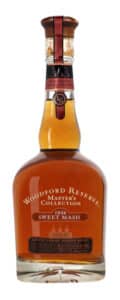
Mouth: sweet and floral start (lokum), mixed with metallic notes, something of horchata and pear yoghurt. Vanilla, cinnamon and buttery corn. Then burnt caramel and light varnished notes again.
Finish: surprisingly short. Surprisingly sour too. Only clove, white pepper and wood staying.
I was intruiged by the aromatic nose, but after that it goes downhill. Interesting experiment but maybe not entirely successful. Not as good as I hoped. Score: 83/100
Sazerac 18 yo – Kentucky Straight Rye (45%, OB ‘Antique Collection’ Summer 2018)
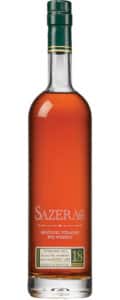
Mouth: a nice texture, and plenty of rye spices now (more than the nose suggested). More breads (especially pumpernickel), cinnamon powder and nutmeg, as well as minty notes and some kind of fragrant vanilla. Leather and hints of chocolate and black tea too.
Finish: long, on all-spice, cinnamon and tobacco leaves. The aftertaste has a lot of wet earthy notes.
A nice mix of dry spice and rye flavours that I didn’t get before (and can’t in down entirely). The earthiness and complexity are excellent. A nice expansion of my horizon, but € 2000+, really? Score: 88/100
The next one is a bit odd: it’s a Tennessee bourbon bottled in Scotland for Whisky Picnic Bar in Taiwan. Several German bottlers like The Whisky Agency and Malts of Scotland released very similar 2011 bourbons and some of them pointed towards Cascade Hollow (George Dickel). I’m not sure this comes from the same source, but you never know.
Tennessee Bourbon 10 yo 2011 (47,9%, Whisky Picnic Bar 2022, barrel, 102 btl.)
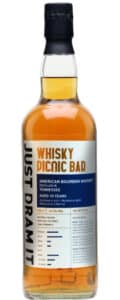
Mouth: typically spicy. Peppercorns, juniper and oak char. Some charred wood. Then apricot and vanilla comes forward, as well as pineapple, coconut and mint. Rather rummy at some point. A dry and leathery hint and walnuts.
Finish: medium long, with this fruity sourness and spicy wood.
I’m guessing this was some kind of forgotten stock or some kind of bulk product that turned out better than expected. I like the brightness and the fruity sourness, which makes it thinner and less bloated than some other bourbons. Score: 85/100
We end this session with Blanton’s Gold Edition. Back in my early days of whisky discovery I loved Blanton’s and I still count it among my favourite bourbons (especially when taking the visual aspect into consideration). Nowadays I’m less into bourbon and the fact that Blanton’s has doubled or tripled in price (at least here in Europe) isn’t really helping…
Blanton’s Gold is a higher-proofed (and higher-rye?) version of Blanton’s, only available outside of the USA (according to most sources). There’s no paper label: text is printed in gold directly on the label. Technically a NAS whiskey, it is said to be between 4-6 years.
I already reviewed Blanton’s Gold Edition back in 2017, but now I’m trying a more recent edition.
Blanton’s Gold Edition (51,5%, OB 2023, barrel #40)
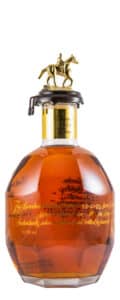
Mouth: a bit on the woody side again? A good dose of nutmeg, rye bread and all-spice. Liquorice, hints of resin and black tea. Then hints of green apple and vanilla. Peppermint.
Finish: quite long, with toffee and cinnamon. Also pepper and hints of charred oak.
Not a bad drop, but the oak and alcohol combination seem to make it slightly more narrow than I expected. At around € 200 a bottle, there are better options available. Score: 84/100
